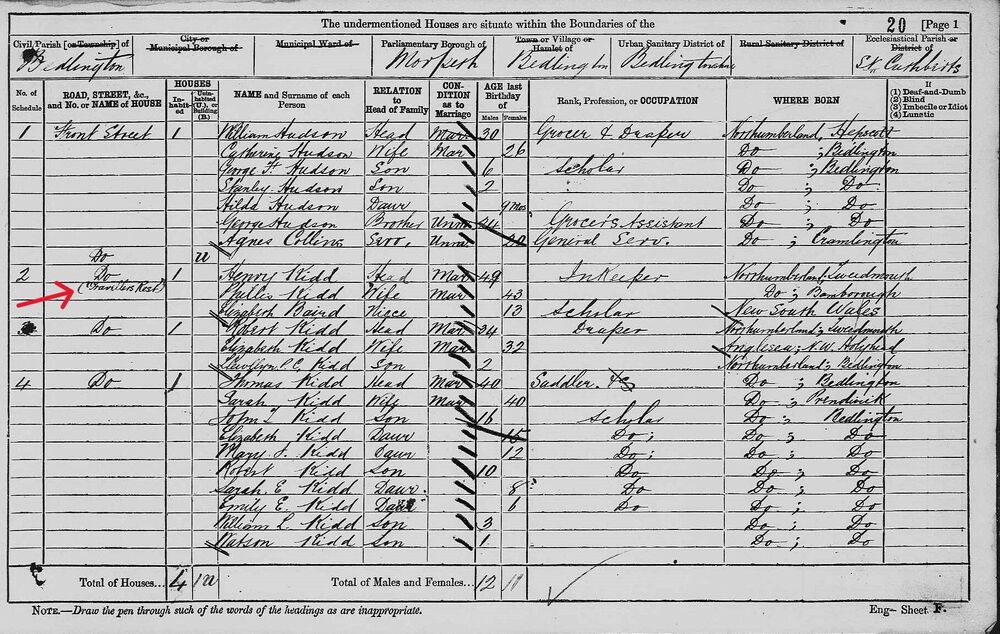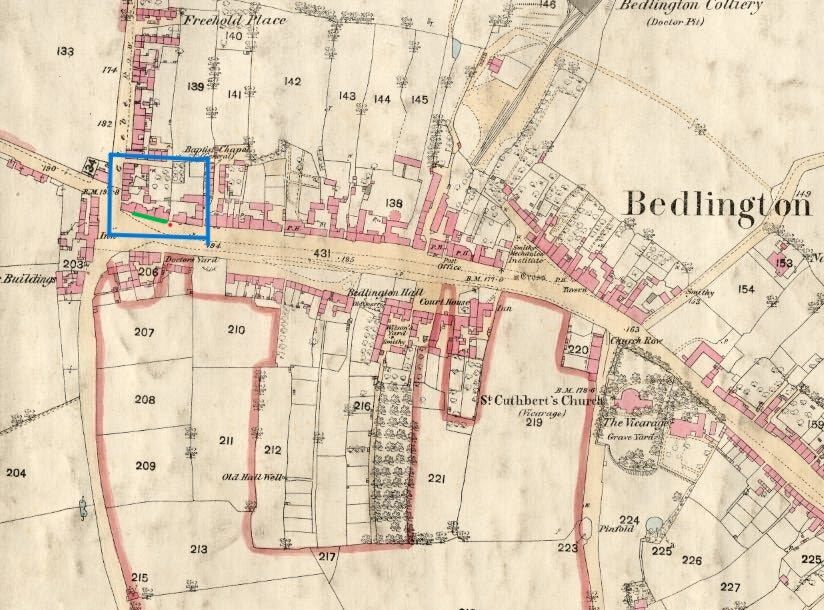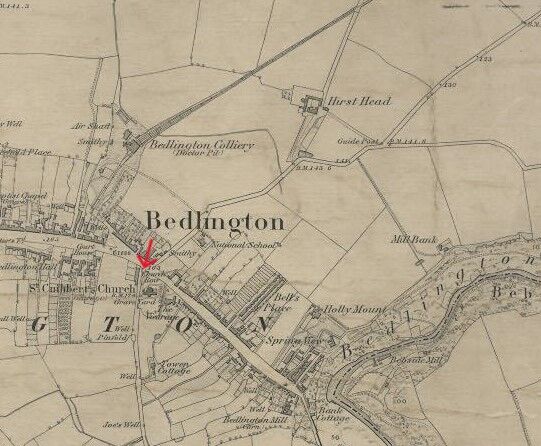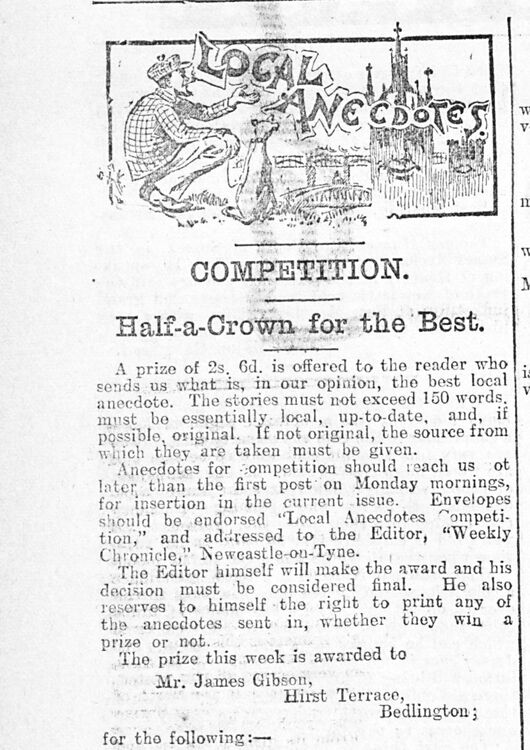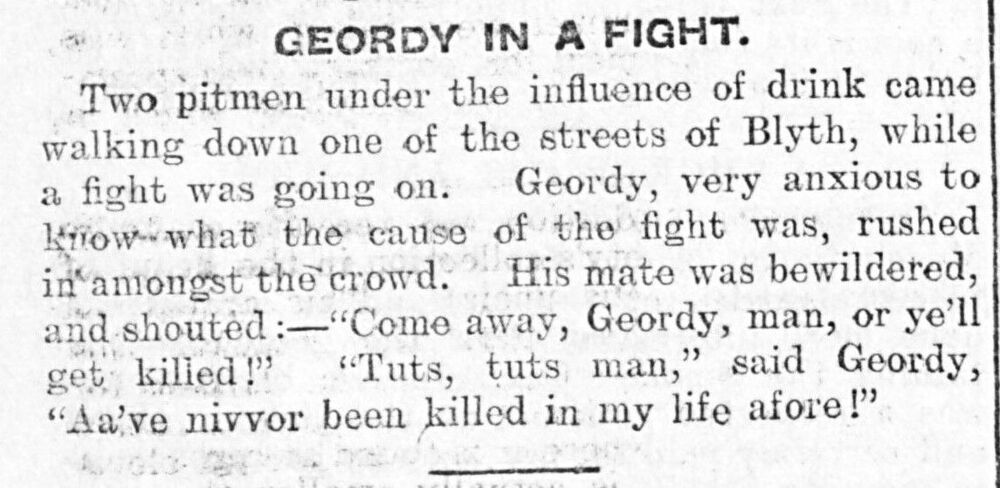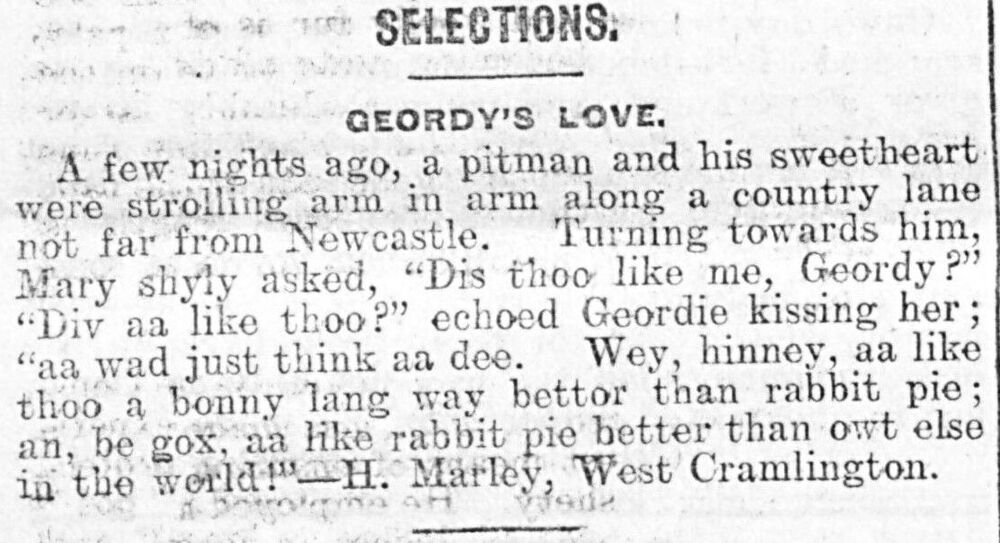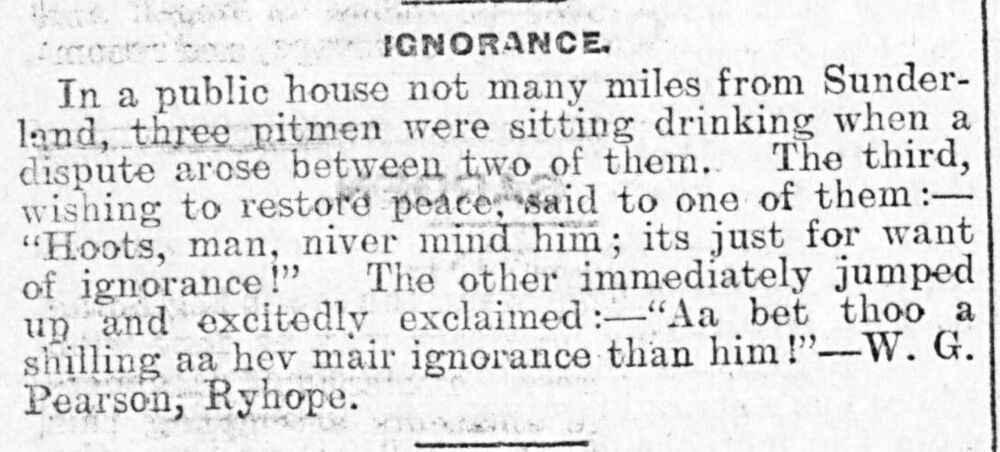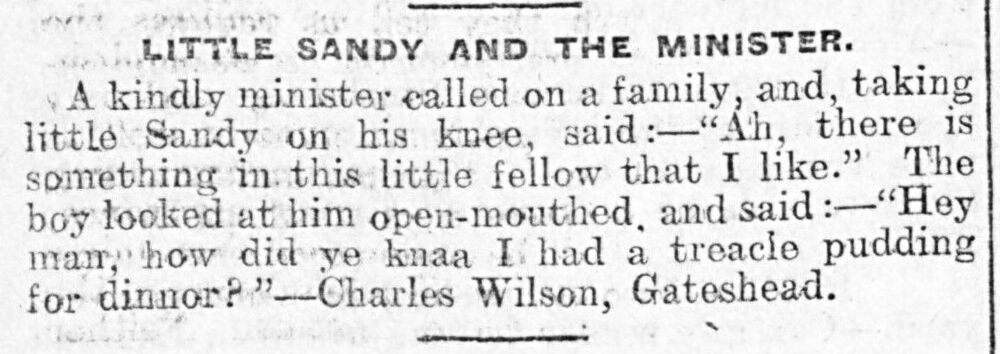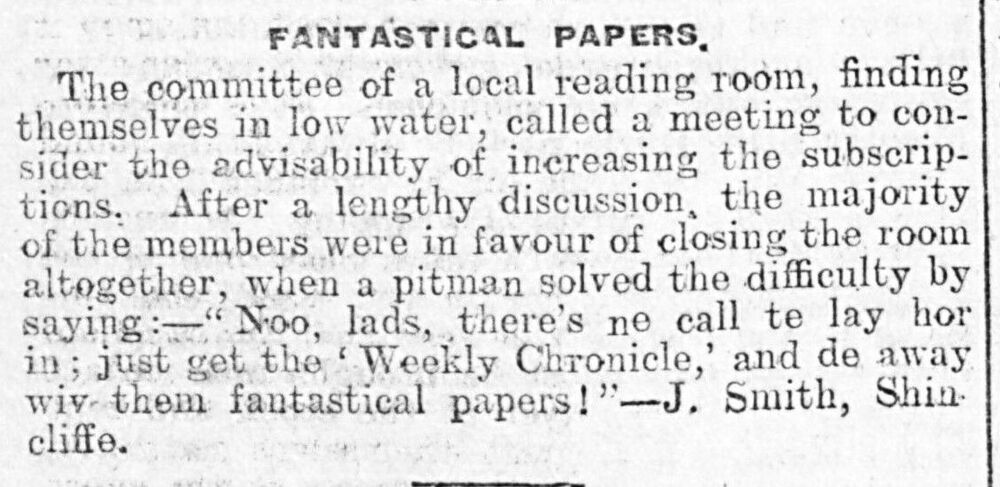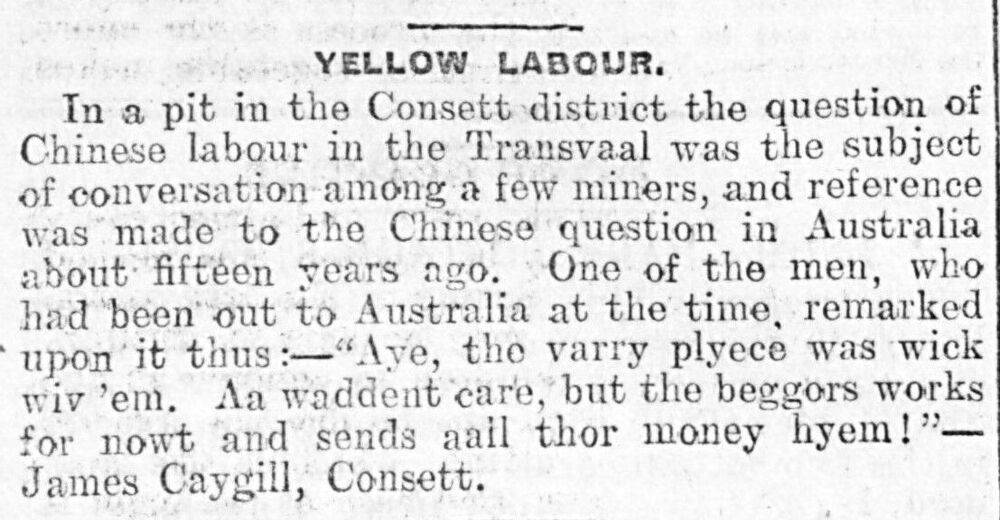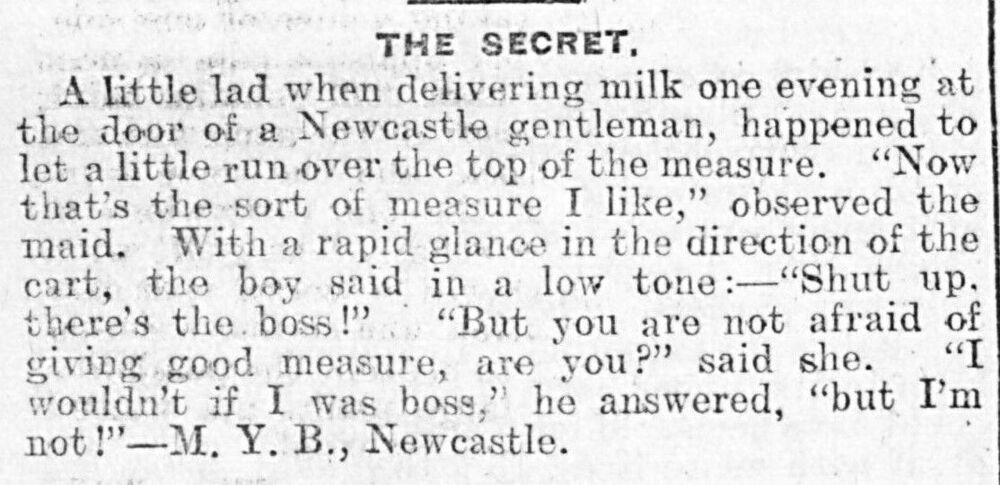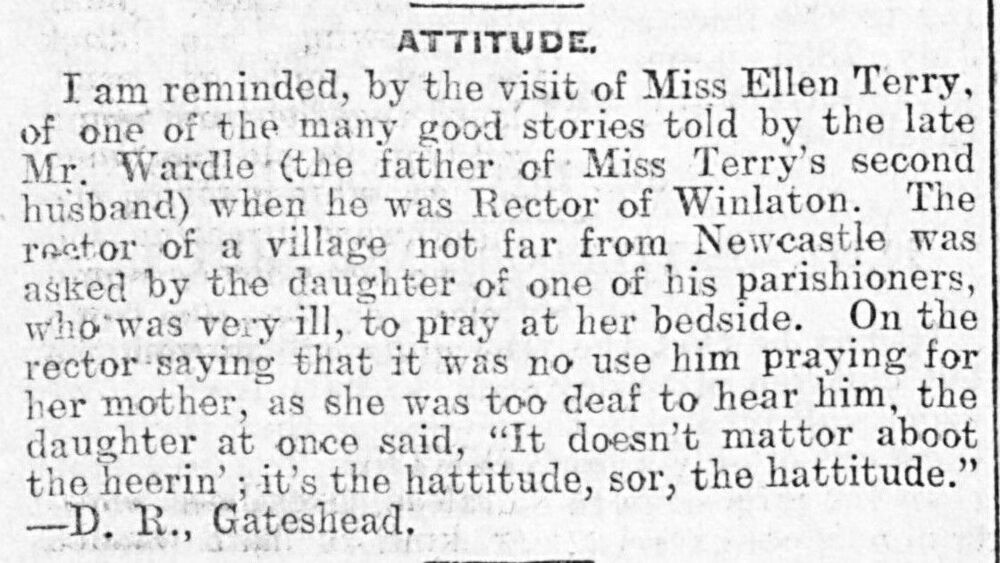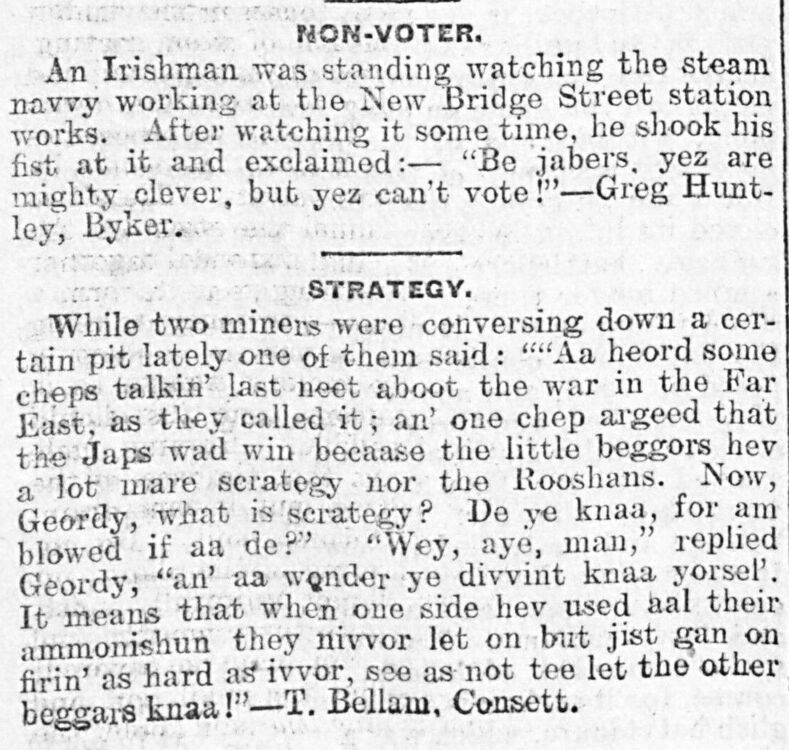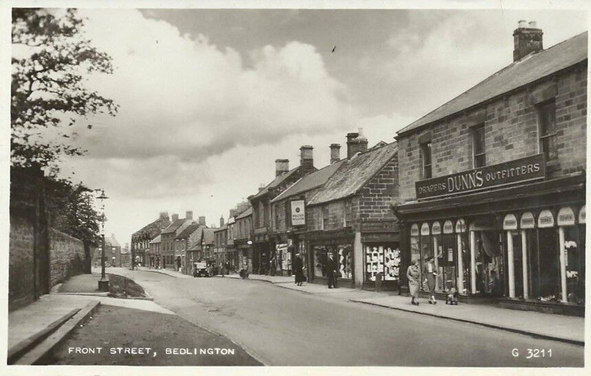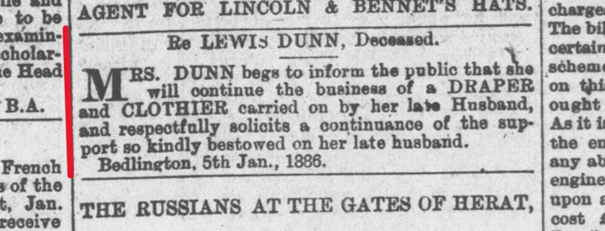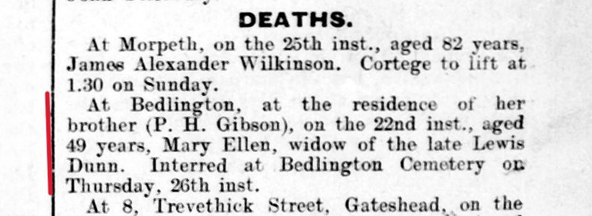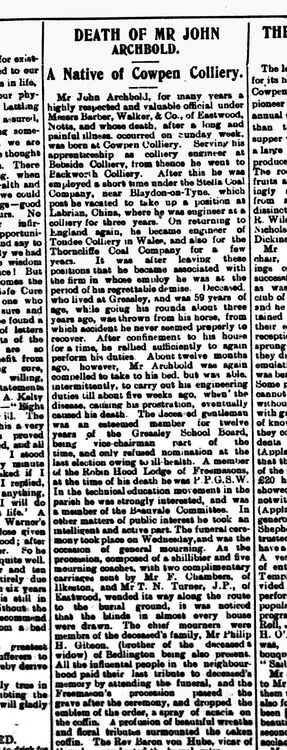.jpg.cdd7f8371d17e2f2f2e2a0e21e02f727.jpg)
Canny lass
Supporting Members-
Posts
3,596 -
Joined
-
Last visited
-
Days Won
407
Content Type
Forums
Gallery
Events
Shop
News
Audio Archive
Timeline
Everything posted by Canny lass
-
Thank you Malcolm for this interesting series of 'factoids'. It's been an eye-opener learning how the well-oiled wheels of local politics function, don't function and even grind to a stand still on occasions. This sort of transparency, is something that is invaluable. Keep up the good work!
-
... why not give it another go, Malcolm. I think these would be much appreciated. When I've had 'foreign' family and friends with me on visits they've loved hearing the history.
-
Very nice indeed! What a transformation! Huge thanks to everybody that was involved.
-
Sorry, I'm very late with the answers! I've not been allowed to look at a screen since Friday. However, I did get a pair of temporary specs. They are far from the most elegant pair of specs I've ever had but at least I can read now and I'm actually writing this myself so not reliant on family and friends anymore! Answers to the New Year quiz: 1. 31 Dec 1923 2. The Gambia 3. Potomac River 4. David Nixon 5. Potato 6. Chan 7. Edward II 8. left 9. Seraphim 10. Fiat 11. Carrot 12. Mary, Queen of Scots 13. Sooty 14. Sandhurst 15. Four 16. Montague 17. Norway 18. Helium 19. Templars 20. Ounce
-
..... and just to test the grey matter tomorrow morning: 1. In which year were the chimes of Big Ben first broadcast at New Year? 2. Of which African country is Banjul the capital? 3. On which river does Washington DC stand? 4. Who was the first British magician to become a TV star? 5. If you were served aloo in an Indian restaurant what vegetable you get? 6. Which very common Chinese surname means ‘old’ in English? 7. Which king of England married Isabella of France? 8. On British coins, does King Charles III face left or right? 9. In the celestial hierarchy what is the highest order of angels? 10. Which car manufacturer produced the Panda? 11. Favourite, Figaro and Autumn King are varieties of which vegetable? 12. Who married the Earl of Bothwell in 1567? 13. Who was Harry Corbett’s furry friend? 14. What is the name of the college attended by British Army Officers? 15. How many gold medals did Jesse Owens win at the 1936 Olympics? 16. What is the surname of Romeo in Romeo and Juliet? 17. In which country is the River Glomma the longest river? 18. Which gas is represented by the symbol He? 19. How were the Poor Knights of Christ and of the Temple of Solomon better known? 20. What is another name for the Snow Leopard? I’ll bet you didn’t know …. Racing greyhounds have their nose-prints, which are as individual as fingerprints, registered to prevent fraud. Answers on Friday. (They may be a bit late as I've been promised a temporary pair of specs but I have to go to the main hospital in Gothenburg so it'll probably be a whole day job!)
-
2003. 14 year old girl killed by a bus but it was more towards Bedlington Station than Red Row
-
Answers to last week's Christmas special: 1. Untidiness and disorder. 2. Green or tan. 3. 48 hours, 11 minutes and 7 seconds. A quiz master who became an international hit during the Covid-19 lockdown is now a World Record holder. Tom Finkill, from Bury, made a name for himself by hosting quizzes online, and now holds the record for the longest livestream quiz. 4. 25 (No el)! 5. The Anglo Saxons. It meant ‘Good Health’. 6. 3 (Dasher, Dancer and Donner). 7. Deep pan, crisp and even. 8. Deck the Halls (with Christmas holly). 9. 1914 10. Mele Kalikimaka 11. Dr Seuss 12. Sugarplums 13. Martin Luther 14. Hula hoops 15. A blessing 16. Strengths 17. Tinsel 18. The German version of mulled wine. 19. A hen. 20. 3 – Indiana, Arizona and Georgia
-
I've just spent a pleasant half hour in the company of one of my 'bonus' grandsons who has read out loud to me Historical Factoids 1 - 11. We've laughed and cried in equal amounts. Thank you Malcolm!! One thing he said to me was "lt sounds just like you when when you're really peed off with people's ineptitude" (my translation). I'll take that as a complement!!
- 1 reply
-
- 1
-

-
Well, I hope you'e all got a nice clean chimney because Santa's done his rounds here and is winging his way to the UK as I write. I've told him that you've all been good so you should find something under the tree in the morning. Naturally, I hope you all have a great day! With a lot of help from the family I've managed to scrape together a Christmas quiz tohelp keep you awake when the mince pies, turkey and trimmings have taken their toll and you fel like nodding off in the afternoon. I know, 'it's not Friday' but it is Christmas so get cracking and good luck! 1. Fotball legend David Beckham suffers from ataxophobia. What is he afraid of? 2. What was the colour of Santa’s clothes before Coca-Cola dressed him in red? 3. What is the longest quiz ever? 4. How many letters are there in the Angelic alphabet? 5. Who started the custom of Wassailing? 6. How many of Rudolph’s companions have names starting with D? 7. How did Good King Wenceslas like his pizza? 8. In which Christmas song can you hear “Fa la la la la, la la la la? 9. During WW1, a famous ‘Christmas Truce’ took place, when soldiers agreed to a cease-fire to celebrate the occasion and play football. Which year did this take place? 10. How do you say Merry Christmas in Hawaiian? 11. Who wrote, “Christmas doesn’t come from a store, maybe Christmas is a little bit more?” 12. Visions of which food danced in the heads of children as they slept in the poem “Twas the night before Christmas”? 13. Who claimed that he could “drive away the devil with a fart”? 14. What was banned in Indonesia for “stimulating passion”? 15. What do you call a group of unicorns? 16. What is the longest English word with only one vowel? 17. Which Christmas decoration do the royal family NOT have on their trees? 18. What is glühwein? 19. What is a female turkey called? 20. How many states in USA have a town called ‘Santa Claus’? I'll bet you didn't know: There are no turkeys in Turkey! Answers 30 December.
-
My OH's eyes did the job for me!
-
Is that Wilf i can see loitering by the traffic lights? Hopefully it is, cos that means it's officially Christmas! Whoopee!!! A very merry Christmas to everybody. I hope to be a bit more active next year as two eye operations have meant I've had to rely on someone else to read and write for me for a couple of months. Reading has been a little bit easier but only if I lift the laptop to within an inch of my face. However, I'm on the mend now but can't get new specs until the beginning of February when everything is healed. Have a great Christmas and knock hell out of what's left of the year!
-
Did Bertha Burns also have tea-rooms on Newgate Street in an upstairs location just about where 'Made of Crumbs' cafe is today (according to Google Street view)? There was certainly a cafe there used by farm hands on market days. Farmers themselves used the cafe on Bridge Street where my sister worked but I have a vague recollection of her mentioning that she occasionally had to work somewhere else on market days.
-
I can think of a couple of possible reasons for a coal-miner's child being born at the granary. Coal-mining was playing a big part in Bedlington’s industry and miners were ‘imported from many parts of Britain. If you look at the population in 1851 there were almost as many miners from other parts of the country as there were native Bedlingtonians. Housing was at a premium and miners lodged wherever they could get a roof over their head until colliery housing became available. Another explanation for a birth at the granary may be that your relative wasn’t born at home. It wasn’t uncommon that prima gravidas (first-time mothers) went to the home of a female relative, often their mother, when the birth was imminent.
-
I think you may have understood me. I was referring only to EV sales in Sweden. I can't speak about Europe as media reports are unreliable. As I'm sure you've noticed, I am no great fan of newspapers. They cater for their potential readers and their advertisers (as you rightly point out). The problem is (in relation to EV production and sales - and just about everything else) that different newspapers report the situation differently to suit clients needs and readers' expectations. For every report that says sales are decreasing you'll find another which says sales are increasing. I based my statement on statistics from Mobility Sweden (MS), the branch organisation for producers and importers of vehicles, who publish statistics of newly registered vehicles every month. Sales of EVs are down 21% this year here.
-
I've just noticed that there is a vacant place between the grocer's shop and Henry. That would have become the hairdressers which dates the painting to between 1891 and 1901.
-
You are quite right Eggy. I've had a wander around the first three buildings on Front Street West End between 1861 and 1921 and the Travellers Rest is always the second house. The first is always a Grocer's shop owned by various people up until Robert Beadnell in 1921 and the Beadnell family still had it in the early sixties. In 1871 the second building is named the Travellers Rest (Beer House) but the occupier is an engineer. However, a side-line in beer-making, and selling thereof, wasn't uncommon. Guess who is running the Travellers Rest , 10 years later in 1881? Henry Kidd and his wife Phyllis! Next door is Robert Kidd running his drapery business and next door to hm is another Kidd, Thomas - a saddle maker. They must be related. Henry dies before the next census in 1891 but his wife continues to run the Beer House. Robert's drapery business has diversified to include dealing in musical instruments and Thomas is still working with leather goods. By 1901 the Travellers Rest isn't mentioned anymore but something interesting crops up. Next door to Robert's business is a hairdresser (male). Did you notice the barber's pole in the painting? It looks like the beer house is now part of Robert's house.
-
I think that later may have become the Blue Bell Inn. In 1921 it was just a few doors down from Llewelyn Kidd: Llewelyn Kidd followed by: Kidds House - 2 families Elliot and Coyles (miners) West End Front Street - 3 families: Pringle (dairyman),Taylor and Redpath (miners) Front Steet - 4 business premises: House painter, Cycle Agent, Baker/Confectioner and Blue Bell Inn.
-
The Watsons must have been there for a very long time. Wm. Watson Esq gets a mention on Armstrongs map from 1769. Almost next door to Mount Pleasant farm and granary is a "seat or noted house" with his name on it. (upper edge of map).
-
Welcome to the forum @Mrs funkyg. I don't know how well you know Bedlington but Kidds House was at the western end of the front street on the north side of the road. It's not possible to say exactly which house it was but I can narrow it down to three or four buildings for you. The map below is from 1860 but not much changed there for many years. The layout was pretty much the same in 1920. However, it's a map that's much clearer than any other that I have. I can say with certainty that Kidds house was located within the blue square and with a fair degree of certainty that it was one of the buildings facing the front street which I've underlined in green. In 1921, the first house, on the corner of Front Street West and Glebe Road belonged to a grocer and provision merchant called Robert Beadnell. The Beadnell family owned that building and shop until at least 1965 (I used to shop there). Next door but one to Robert Beadnell was a 42 year old widower, Llewelyn Kidd, who was a general dealer. Both were self employed and running their own business and living above the shop. Llewellyn owned property there, hence the name Kidds House. He also owned property in Kidds Yard which was located directly behind the buildings facing Front Street. I've marked the entrance to Kidds Yard with a red spot.
-
Hi Lynne, In all the census records from 1841 to 1921 there is no Church Road. There is however a Church Row. Much depends on where you found the name and the year it was written. 'Row' is quite often wrongly transcribed to 'Road' when documents are transcribed for digitalisation. In 1861 Church Row housed 15 families but by 1871 this was reduced to 9 families. Here it is on a map from 1860. As you can see it is located at the entrance to what is now Church Lane.
-
I remember you talking about your writing, Hand written or not I doubt you'd get it published if you're still writing in your dialect- There's no market as dialects are dying out rapidly and very few are able to understand the north east - or any other - dialect, written or spoken, if they are younger than you and I. I'm helping a young man with his master's thesis just now on this very subject of dialect decline. It's saddening to say the least. But never mind! What a legacy you will leave for your family!!
-
It's been a while since this topic was aired so I thought you might like to see what was amusing the people of the North East 120 years ago in 1904. I found this while rummaging about in the archives for James Gibson (nailer) but while he is named as the winner of the competition (winning the princely sum of 2 shillings and 6 pence!) he doesn't appear to be the James Gibson I was looking for. (Newcastle Weekly Chronicle 26 March 1904)
-
I’ve finally got my dahlias and geraniums stowed away for the winter and the falling leaves are keeping me very busy. It’s been a while since I could do any research on the Gibson family but now I’m back in business! Now, where were we…….? Following the death of his mother Ann in 1869 and the deaths of his brothers Philip in 1858 and James in 1878, Henry Gibson, born 1814, is the only surviving male in the family business and he takes over its management. He marries Mary Hedley in or around 1837 and together they have at least six children: daughters Ann, Jane Elizabeth, Hannah and Mary Ellen born 1837, 1842, 1850 and 1852 respectively. He also has two sons Philip Hedley Gibson, born 1847, and William James Gibson born 1855 who will eventually take over from their father. Before going on to Philip and Williams part in the ironmongery business it’s perhaps worth mentioning a couple of Henry’s daughters. In 1877 Henry’s daughter Mary Ellen, 25 years old, marries Lewis Dunn a farmer’s son from Bebside. On leaving school Lewis becomes a draper’s apprentice with Mr John Young of Waterloo Place, Blyth. (later Hedley Young?) By 1871 Lewis is a fully fledged draper managing, and living above a shop (with very distinctive windows) on Front Street East in Bedlington just a few doors away from the Gibson family home. Once married the couple live above the shop on Front Street East. By 1881 the couple have two small children and the business is paying well enough for them to have a live-in domestic servant. Unfortunately, Lewis dies in 1885 just eight years after their marriage. He leaves Mary Ellen with four young children. However, the Gibson girls are made of strong stuff and a little advert in the Morpeth Herald, dated 5th January 1886, shows that Mary Ellen continues to run the business. Just how long Mary Ellen runs the draper’s shop I haven’t been able to ascertain but at some point after 1891 she, together with three of her children, returns to her childhood home (now 34-36 Front Street East) to live with her brother Philip Hedley and her father Henry. Mary Ellen dies there just 3 days before Cristmas in 1901 aged 49 years. (Morpeth Herald dated 28th December 1901). Mary Ellen’s sister, Jane Elizabeth, born about 1842, marries enginewright John Archbold 1863. Once married the couple live a somewhat nomadic life moving from the North East, first to Ryton in County Durham then to South Yorkshire, where John obtains work as a colliery engineer. They remain in Yorkshire only a short while before moving to Derby and finally to Nottinghamshire where they settle in Greasley. They manage to have six children along the way and John’s work includes three years in China but it’s not clear if Jane accompanies him. John dies in Greasley in 1897 and he seems to have been a well-respected man. Jane Elizabeth and her children remain in Greasley after John’s death and she dies there in 1918. Back in Bedlington, Henry has continued to run the Ironmongery business and when sons Philip and William are old enough they are introduced into it. In 1871 Philip, then about 24 years old, is already his father’s assistant. William, then 16 years old, doesn’t seem to enter the business immediately. He works first as a clerk. possibly in Newcastle as it is there he is registered in 1871 whilst at the home of a family friend – 56 year-old railway mineral inspector Cuthbert Davidson and his family. However, he is later registered in Bedlington and enters his father’s business between 1871 and 1881. With William’s return to Bedlington there are now three family members in the business. Henry is still an ironmonger and still head of the family. He is however, in 1881, a widower having lost his wife in 1874. His son Philip is no longer his assistant but has himself aspired to the rank of ’ironmonger’ and has also branched out into the world of banking – albeit as an agent. The winds of change are blowing through the nail industry. Where will the Gibson family go from here? To be continued .....
- 18 replies
-
- 1
-

-
- furnace
- vulcan place
-
(and 2 more)
Tagged with:

.thumb.jpg.7493ddab4a696108cf2b849323d3c155.jpg)
